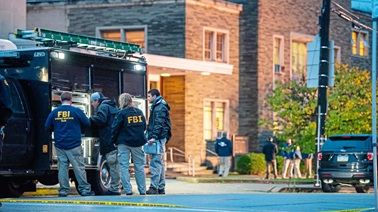A report released by the FBI about active shooter incidents in the U.S. documented a decrease in such incidents in 2022, although it was still an increase over a 5-year average.
Based on the key findings, information in the 33-page report aims to help law enforcement and communities understand the levels of threats associated with active shooter incidents.
The FBI designated 50 shootings as active-shooter incidents last year, an 18% decrease from the prior year (61 incidents).
Many of the statistics shared by the FBI provide insight into the types of targets, demographics of the shooters and more. But there is no easily distinguishable pattern.
Last year’s occurred in 25 states and the District of Columbia and took place in open spaces, commerce, residences, education, government, houses of worship and a health care facility.
There were 313 casualties, including 100 killed and 213 wounded. One law enforcement officer was killed and 21 others were wounded.
Texas had the most incidents (6) followed by Arizona, Florida, Michigan and New York with 3. The month of May had the highest number of active shooter incidents (9), with January and September tied with the least number of incidents (1).
Sunday had the highest number of incidents, but overall they happened on every day of the week. They were most likely to occur between noon and 11:59 p.m.Based on location, 46% of the incidents occurred in open spaces (23), followed by 28% in commerce (14), 8% in education and residences (4), 4% in houses of worship and government (2), and 2% in health care (1). There were 17 (34%) incidents that involved multiple locations, including 14 open spaces and three in commerce).
Of the 50 shooters, 47 (94%) were male, one was female, one was nonbinary, and one was unidentified. The shooters ranged from 15 to 70 years old. In 50 incidents, 61 firearms were used by shooters — 29 handguns, 26 rifles, three shotguns and three “unknown” weapons. Four of the shooters wore body armour.
In 48% of the incidents, the shooter had a known connection to the location and/or at least one victim, whereas in 52% of incidents, there was no known connection identified. The FBI defines an active shooter as one or more individuals actively engaged in killing or attempting to kill people in a populated area. The active aspect of the definition implies the ongoing nature of an incident and thus the potential for a response to affect the outcome.
One interesting aspect of the report is the documentation of citizens being involved in a confrontation with an active shooter. In the Monterey Park, Calif., shootings last January, an attendee at the second club the suspect visited wrestled the gun away.
In 16% of the incidents last year, citizen intervention and/or confrontation of the shooter resulted in the end of the incident. In one incident, a county transit bus driver, after hearing gunfire inside the bus, drove to the police department parking lot where the shooter was apprehended by law enforcement.
In another, citizens restrained the shooter and confiscated two weapons prior to law enforcement arrival. In still another, an unarmed citizen subdued the shooter who began firing during a church dinner. The shooter was restrained until law enforcement arrived.








